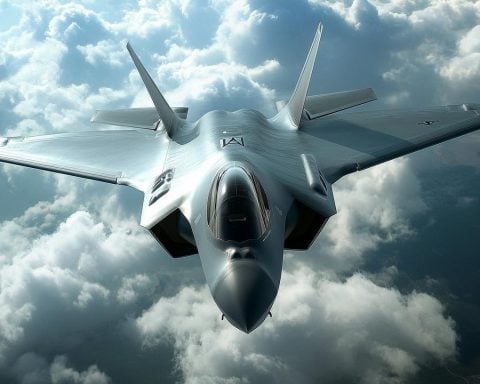A dramatic turn of events unfolded at the Tanegashima Space Center when a fire engulfed the site during a crucial engine test for Japan’s new Epsilon S rocket. The Japan Aerospace Exploration Agency (JAXA) had to halt the proceedings immediately. This mishap occurred during a test scheduled at 8:30 a.m. local time, sending journalists camped a kilometer away into a frenzy as they witnessed a significant explosion.
Intense flames and thick smoke were vivid in the footage aired by national broadcaster NHK. Fortunately, no one was injured in the fiery incident. JAXA, committed to unraveling the mystery behind the blast, has initiated a comprehensive investigation to determine the sequence of events leading to the fire and to formulate prevention strategies.
Japanese top government representative, Chief Cabinet Secretary Yoshimasa Hayashi, underlined the significance of these developmental strides in the broader scope of Japan’s space aspirations. He reassured the public of a diligent probe into the mishap, asserting that advancing flagship rocket technologies remains crucial for Japan’s autonomy in space innovation.
In an unfortunate twist, this incident casts doubt on the timeline for launching the Epsilon S, initially targeted for March 2025. Similarly, Japan has recently contended with setbacks in other areas of its space program, including issues with its prospective H3 launch system and a failure by the private firm Space One earlier this year.
As JAXA forges on with determinations for a safer future, the ambition to maintain Japan as a formidable force in space exploration remains unwavering.
What the Epsilon S Rocket Misfire Means for Future Space Innovations
The recent fiery incident at the Tanegashima Space Center has opened up discussions far beyond just the Epsilon S rocket; it’s raising questions about the future of space technology and humanity’s drive for innovation. While JAXA is at the forefront of navigating these uncertain waters, the incident throws a spotlight on both the promises and perils faced by modern space exploration efforts worldwide.
The Complex World of Rocket Science
Failures in rocket testing are not uncommon, yet each incident adds lessons crucial for the advancement of technology. The abrupt halt caused by the fire underscores an important reality: even minor mechanical oversights can trigger catastrophic failures, reminding us of the complexity and precision required in aerospace engineering.
A Balancing Act: Innovation Vs. Safety
The development of new rocket technologies like the Epsilon S is integral to space exploration, promising more efficient and cheaper ways to launch satellites. But these innovations carry inherent risks. Balancing rapid technological advancements with the stringent safety protocols is a dilemma faced by space agencies globally.
A Gateway to Improved Technologies
Despite setbacks, challenges like these often accelerate innovation. Retrieving crucial data from failed tests can lead to breakthrough enhancements, pushing the envelope of what current technology could achieve. JAXA’s rigorous investigation will likely lead to advancements not only for the Epsilon S but across Japan’s entire space program.
The Competitive Space Arena
Globally, space exploration is becoming increasingly competitive. Japan aims to keep pace with pioneering efforts from NASA, ESA, and emerging players like China and India. The mishap might pause Japan’s plans, but it also highlights the relentless race to lead in outer space innovations.
Advantages: Pushing Boundaries of Space Tech
An advantage of the incident is the potential refinement of existing technologies, which could result in stronger, safer rockets. Knowledge gained from failure often leads to the development of new materials, systems, and methodologies.
Disadvantages: Delays and Trust Issues
However, these incidents also delay missions and can affect public trust. They underscore the challenges in securing funding and maintaining public interest in space exploration, which is crucial for long-term success.
What Lies Ahead for Space Agencies?
How will incidents like this reshape policies and approaches to space exploration? Will they push agencies to allocate more resources to safety, or could they drive the integration of innovative technologies faster than planned?
Many of these questions remain open-ended as JAXA and other agencies chart a course forward. What is clear is that continuous learning and adaptation remain central to maintaining momentum in the competitive world of space exploration.
For more insights on space technology and exploration, visit JAXA, and explore cutting-edge developments.
In a world increasingly reliant on the benefits garnered from space technology, the next leap may well emerge from the lessons learned in these moments of adversity.


















